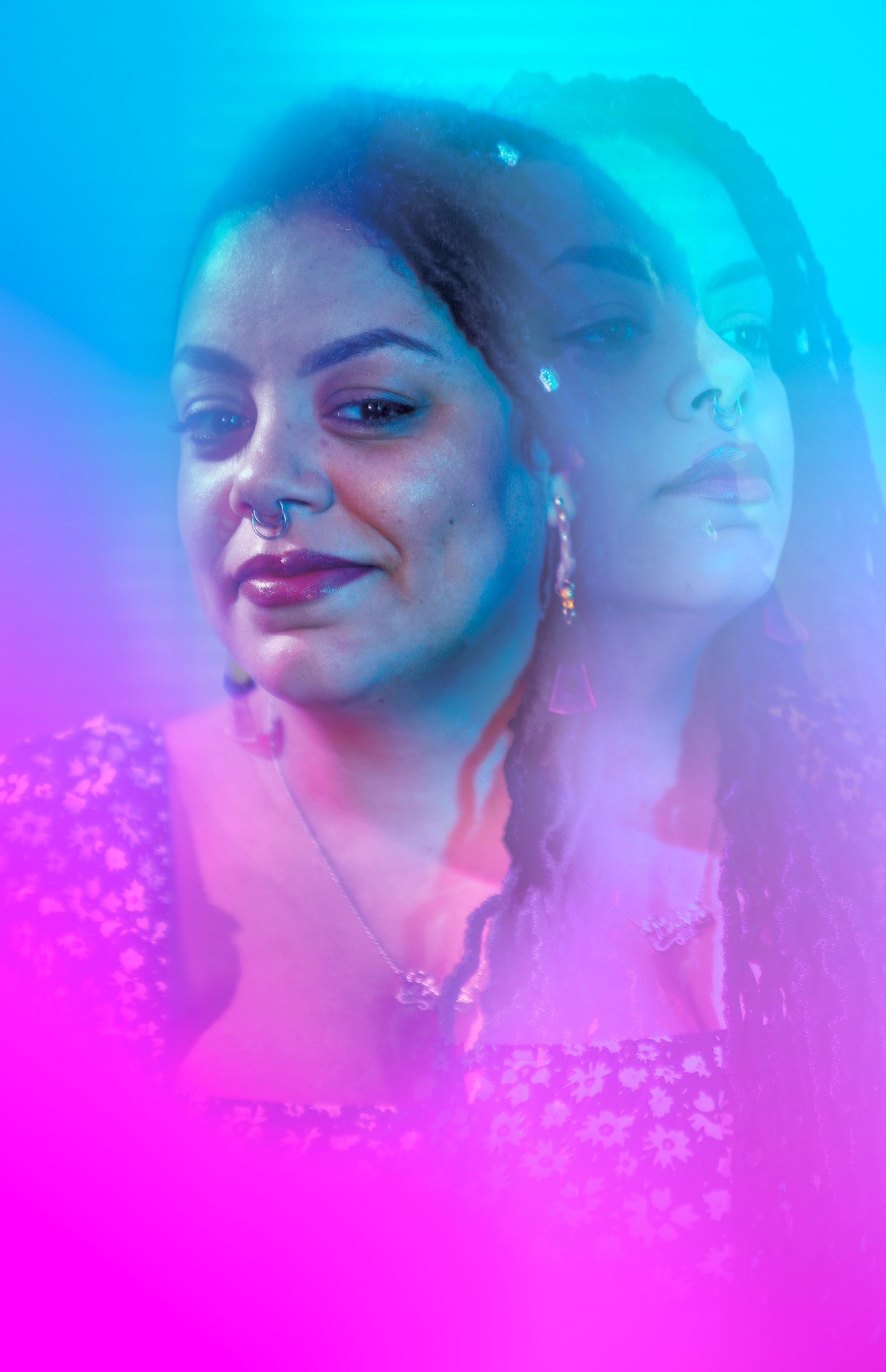
9 minute read
ROOM TO BREATHE
Room to breathe
Artist Bria Miller hopes to encourage others to be themselves and find their space
BY AMEETA VOHRA
PHOTOGRAPHY BY BRUCE MURRAY/VISIONFIRE
Yarmouth native Bria Miller left for Halifax after high school to escape racism and homophobia, and create space for themself. Now, as a Black, Indigenous, queer artist, they want to do the same for other marginalized and racialized people.
“Creating those spaces is so important to invade that reality of discrimination and surveillance everywhere we go, but also because we’re treated as suspicious when we gather,” says Miller. “The benefits of that remind us of our vitality, and everything doesn’t have to be about getting away from white people. It’s about being together.”
Miller says many spaces where marginalized people gather are based around sharing skills or holding space for each other, encouraging opportunities for people to be themselves and not be surveyed or feel minimized by the white gaze. “It can be draining, especially to be in public as a Black or Indigenous person,” they say.
After moving to Halifax in 2011, Miller started a teaching degree at Mount Saint Vincent University, a welcome move after growing up in Yarmouth.
“That is a big reason (for leaving): being Black, Indigenous, and queer,” they say. “It’s very white in Yarmouth and can be very racist … Segregation is still blatant in Halifax; it’s even more so home.”
After a year and a half of studies, Miller realized they needed an outlet for “cathartic” healing. They dropped out of university and started experimenting with art, recalling the encouragement of junior-high art teachers who introduced them to different media.
“I started with watercolour, ink illustrations, and painting acrylics,” they say. “That changed over time as I realized the work I liked to do more. It happened through a lot of experimentation and collaboration with other artists; living in the city and working with people who do all different art has taught me many skills. I am communitytaught, in a way.”
Creativity runs in Miller’s family. Their uncle Michael “Metal Mike” Miller made posters for the Khyber Centre of Arts and continues to make patches and elaborately painted denim jackets for metal bands. Miller’s grandmother creates ceramics and cards. Meanwhile, partner Tino has provided support, encouragement, and honesty.
Miller has had many opportunities to showcase their work, including an artist residency at Wonder’neath, a co-director job with the Khyber Centre, selling stickers, and hosting an art show at Alteregos café, a place where they worked and had a supportive boss in owner Meghan Strum.
“I first met Bria with their partner 10 years ago, and they did some help facilitating some things at the café for me,” says Strum. “We became close friends, and they started doing art shows there. Their art shows inspired the future of art ... in Alter Ego’s space. Many other Black women from the community are putting their art on the walls.”
One of Miller’s first exhibitions was 4th Wall at the Art Gallery of Nova Scotia. It featured a painting, “Resilience in Brown, Queer and Woman,” which reflects their journey.
“It’s essentially a self-portrait of me, and to the left of the image, it’s a lot of little visual representation of my story and pain,” they say. “There’s little alcohol bottles and eyeballs entangled throughout my hair and stuff. As it moves towards the right of the photo, it’s different healing methods I found like a paintbrush tangled in my hair and little music notes. It feels representative of the beginning of a journey in a way.”
Another personal journey came to life in the digital portrait “Welcome to My Neck.”
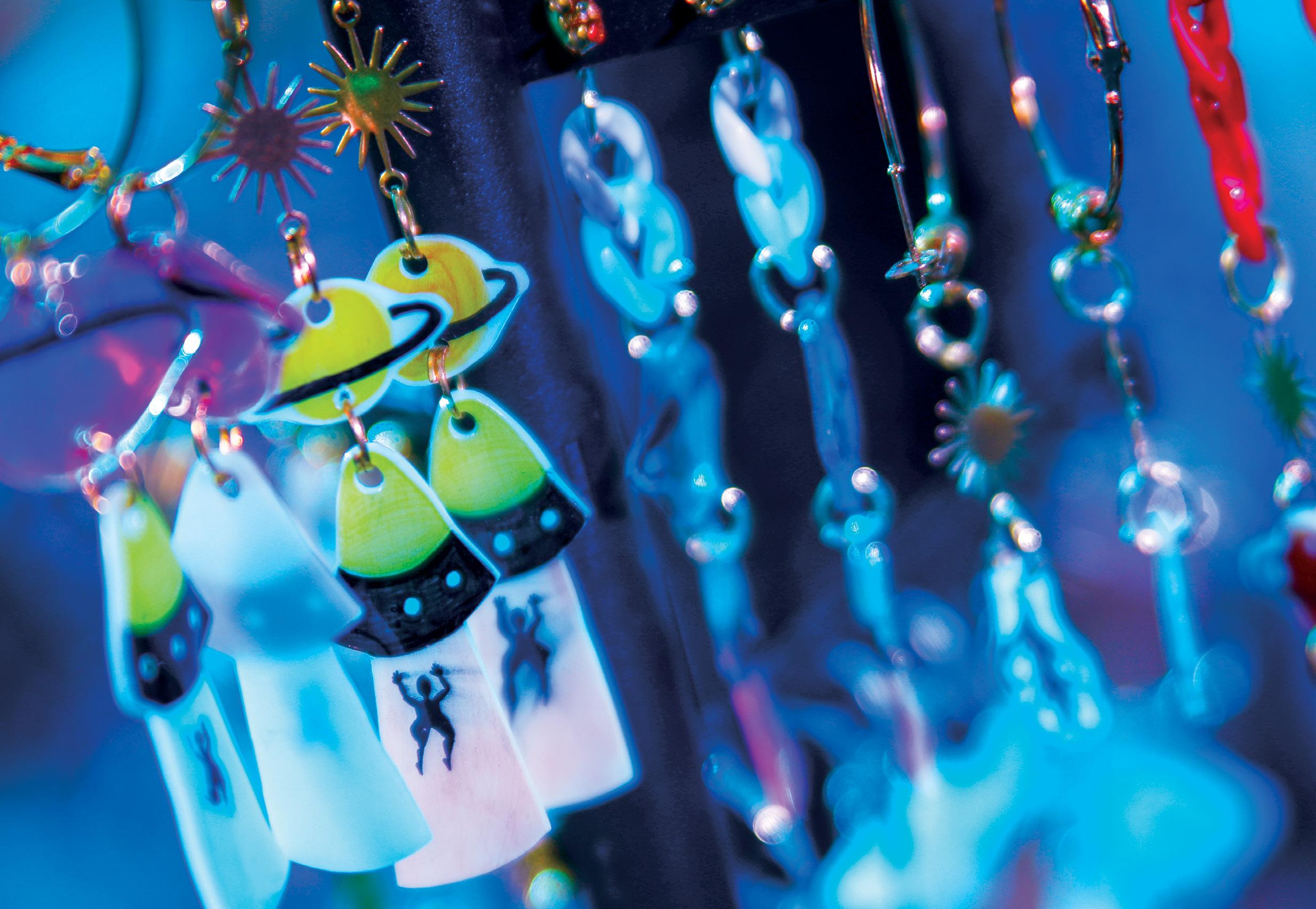
Bruce Murray/VisionFire

Bria Miller
Bruce Murray/VisionFire
“It’s from the perspective of above my head, and it’s my legs and my forearm,” Miller says. “You see a lot of clutter in the background; there’s my iPad, a rolling tray, and chips. It represents this time in the pandemic and has my new tech.”
When it comes to their vision and concepts, Miller talks through ideas with their partner and friends. Then, they draw or write it into a Google document accompanied by a to-do list of steps to make that vision come to life.
Miller found a platform in the annual Nocturne art festival in Kjipuktuk/Halifax. For the 2018 event, they collaborated with Liliona Quarmyne, Catherine Martin, Cynthia Martin, Sarah Brooks, and Tayla Fern Paul to create Mi’kma’ki 2030, an art performance highlighting environmental racism.
“That project was responding to the report put out by scientists, letting everybody know that if fossil fuels and fracking don’t stop, we will have little to no clean air or water on our planet by 2030,” Miller says. “That is an active report that’s out, saying our windows are Bria is pretty closing to fix our planet. So that’s scary. People need to think about the unstoppable. I’m pretty relationship to the land. The fact that it’s been surrendered. They need excited about the kinds to learn about the treaty and how that governof things they will be ment has not honoured that at all.”
The outgoing execuable to change tive director of Nocture, Lindsay Cory, recalls how —Michelle Strum the collaboration had a significant impact on the art community and the city as a whole with a perspective from BIPOC artists. “It was really important, as it is every year, but, particularly in that theme, that we prioritize conversations and art pieces being led by BIPOC artists,” she says.
“It just became this amazing project with all of these Indigenous and Black artists working together. But there were also many storytelling elements to it. It felt like a great opportunity for Nocturne to highlight that work.”
In 2020, Nocturne’s theme was “Echolocation,” which pondered the question: “Considering all of the ecological and social injustices at present, what is the role of art in transmitting our impact and collective responsibility as stewards of this land?”
Miller was hired to create a visual storytelling of “Meeting Waters,” a discussion series curated by Lindsay Dobbin and created by Ingrid Waldron, a social scientist and associate professor at Dalhousie University. It connected artists with wisdom holders from different communities in Mi’kma’ki that experienced environmental racism. Miller created a poster and materials highlighting the speakers.
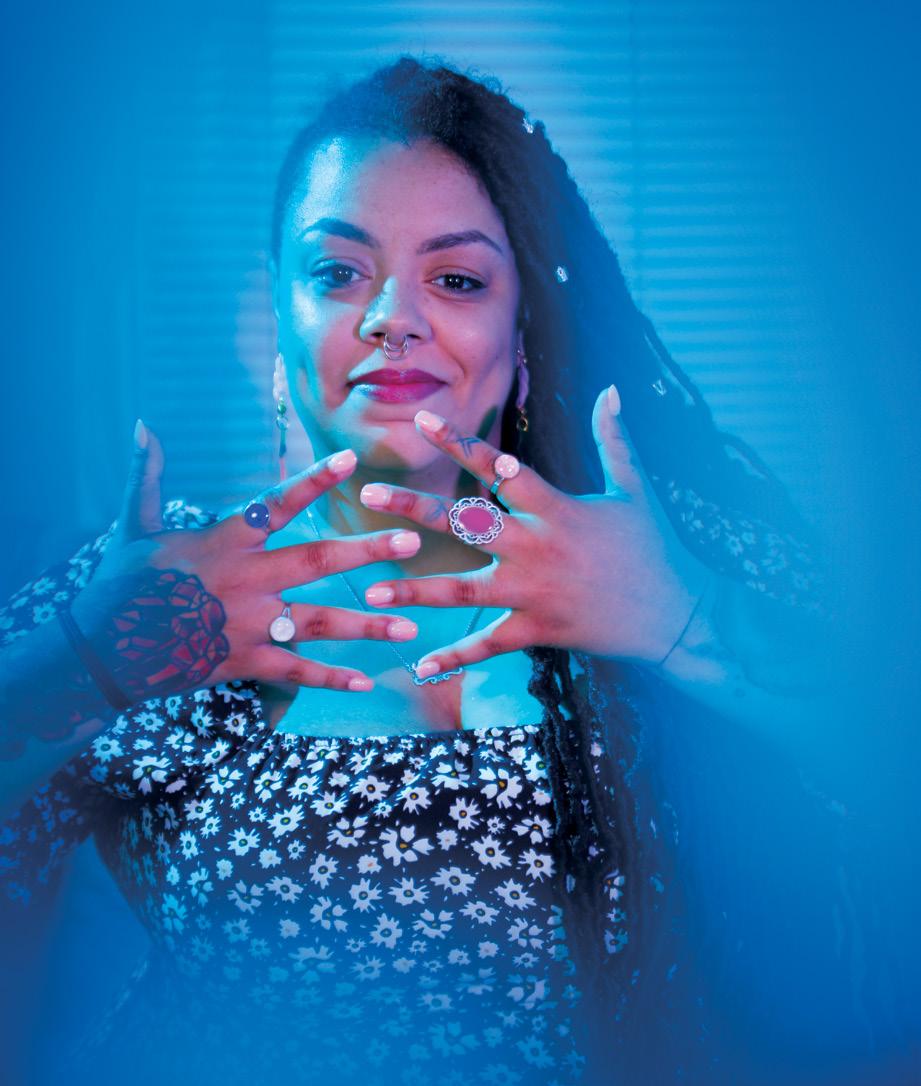
Bria Miller
Bruce Murray/VisionFire
Cory says the two Nocturne events spotlight Miller’s impact on the greater community.
“Bria is really listening to what is going on, creating work in response to that, and they deeply feel what’s going on,” she says. “That resonated with many people in the city and province — how they feel, what they want to see happen, and they have a really beautiful way of telling that story through their art. It’s more exciting for us to engage with artists that do that; artists who are really speaking truth within their art, but also connecting with other people with other experiences to grow their practice as well.”
Miller has made an impact on their community with Taking BLK Gottingen, an event they collaborated on with African Nova Scotian queer visual artist Kordeena Clayton and the North End Business Association’s Marika Paris. The trio came up with a concept while they sat on the grass with Alteregos owner Strum, taking a break from renovating one of her hostels.
“We had conversations about how there used to be Black-owned businesses on Gottingen and how visible the changes have become, especially over COVID with a lot of development happening,” Miller says. “We were talking about how it would be awesome if Black businesses could line Gottingen Street and essentially take over, in a way.”
Strum says all this hard work comes from Miller’s passion for their art. That includes a burgeoning business side: selling jewelry they make with clay, resin, and wire, plus creating tote bags.
“There’s so much love; it breeds work, and at the same time, there is so much politics, so it’s like this combination of love and politics that really pushes the envelope,” Strum says. “It is like their integrity is always to be who they are and bring that to the community, selling that and showing that off.”
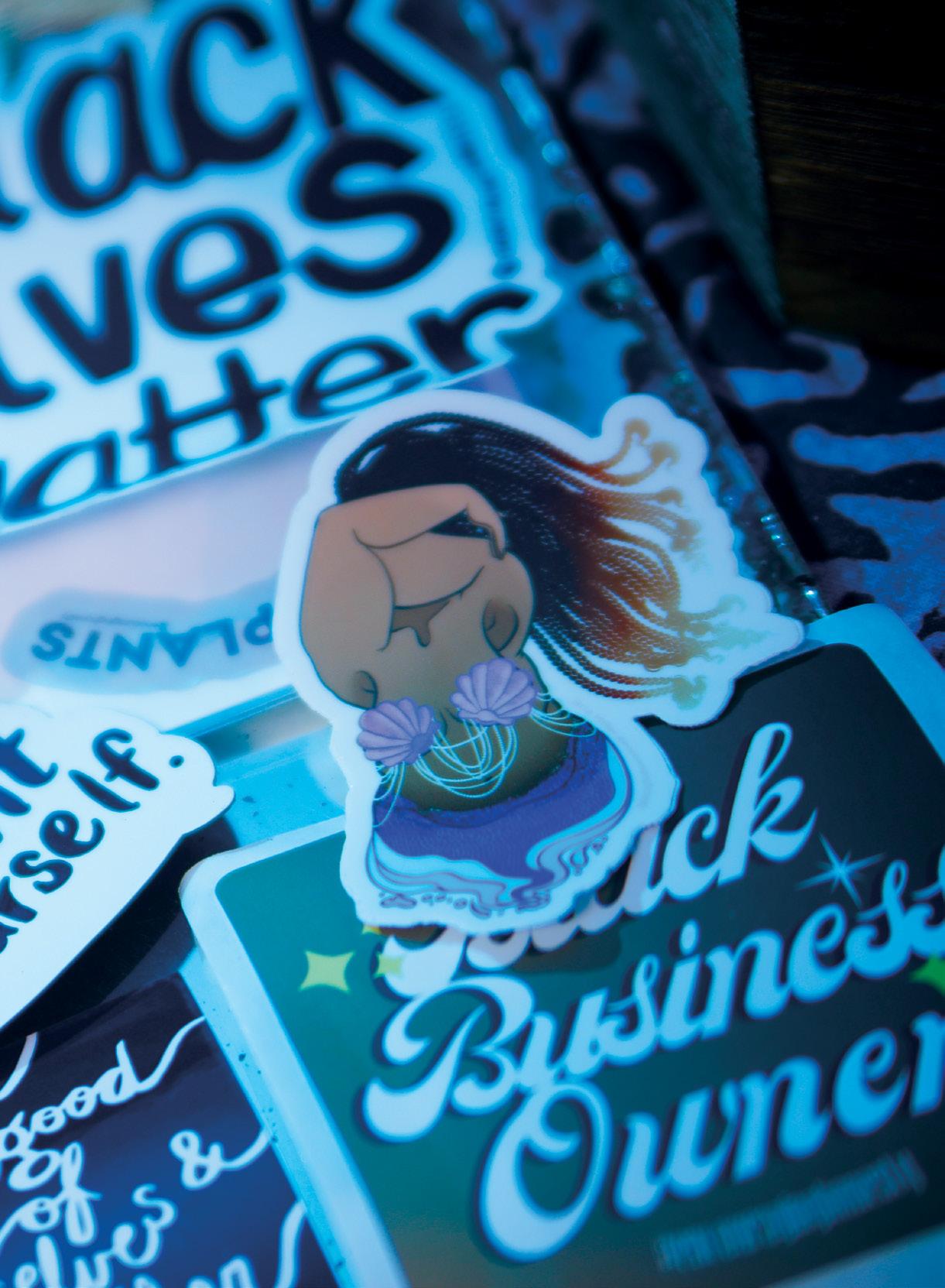
Bruce Murray/VisionFire
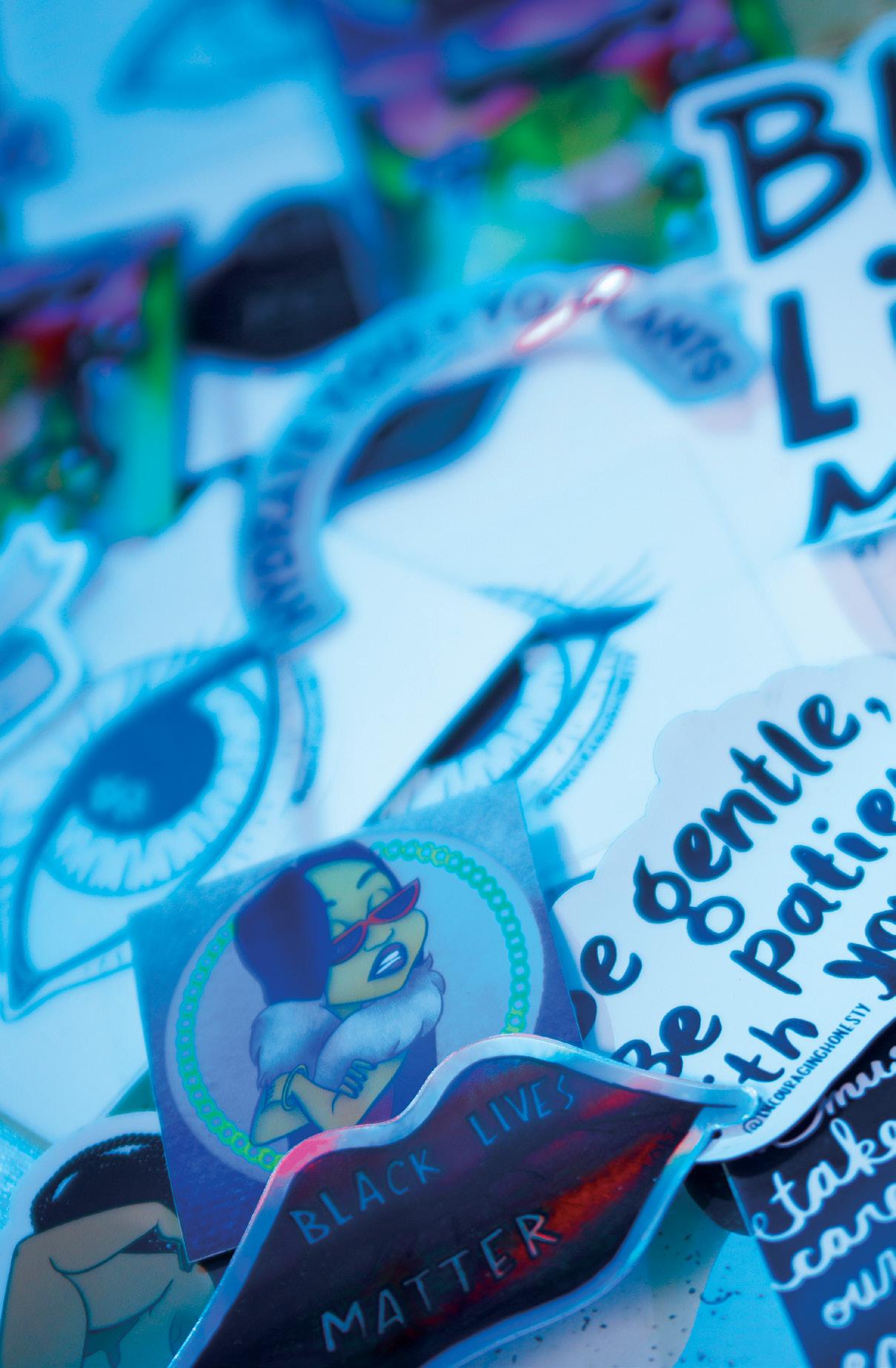
Bruce Murray/VisionFire
Art that makes a difference
“Bria is pretty unstoppable,” says Strum.“I’m pretty excited about the kinds of things they will be able to change from a system perspective and have that level of autonomy to bring their creativity to the next level. Go out and find yourself an original Bria Miller.”
Miller continues making digital art, ink illustrations, graphic designs, stickers, art prints, and paintings through their business, Bria Makes Things, with one goal in mind.
“I would hope that it encourages people to speak their truth and tell their story,” they say. “Many people struggle with that, especially if they haven’t been given the space to speak.”
Correction and apology: The version of this story published in the July 2022 print edition of Unravel Halifax contained errors. On page 18, Michelle Strum’s first name was incorrect, as was the name of Bria Miller’s “Welcome to My Nest” artwork. On page 20, Bria was misquoted as describing the land as “surrendered,” which gives an inaccurate picture of her views. She actually said “unsurrendered.” On page 21, we inaccurately described the origins of the Taking BLK Gottingen event. Unravel Halifax apologizes to Bria, Michelle, and all readers for these errors. We’re reviewing our editing, fact-checking, and transcription processes to try to prevent their recurrence.










